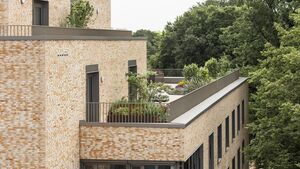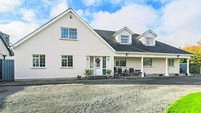Living Greener: Turn your roof into a garden

Green roofs come in many forms
AS a child I remember going to the city and looking out the window of a tall building for the first time, looking at the vast urban landscape spread out before me, and realising it was the ugliest thing ever made.
The roofs, invisible to people driving down the streets, lay covered in bare gravel or nothing, with puddles gathering on them, waiting for a leak. It all seemed so unnecessary – why not plant grass there?
Cultivating plants on your roof creates a patch of natural habitat, partially replacing what was destroyed to create the building in the first place. They provide food for bees and other miniature helpers who will fertilise your garden.
They help insulate your home, which can spare you heating and cooling costs. Finally, they look brilliant.
Green roofs come in many forms, the most ambitious of which are called intensive green roofs and allow for heavier weights and deeper roots of shrubs and annuals.
These can combine water management systems that process wastewater from the building and store surplus rainwater, and can allow the inhabitants of a building to grow anything but trees above their homes. Understandably, they generally appear in buildings made for this purpose.
The most popular and widely applicable type, though, is the so-called extensive green roof.
To create one, people generally cover an ordinary roof with some kind of lightweight plastic, like pool liner, and spread thin but fertile soil on top of that.
The soil should be laced with grass and other seeds, and over the soil should stretch something to stop erosion until the plants grow – garden fleece, straw or some similar inhibitor.
We created a roof like this when we built a cob house in County Clare. Cob is a mixture of clay subsoil, sand and straw, and it makes a surprisingly good building material.
After building the stone foundation, cob walls and wood roof, we unrolled layers of pond liner over the roof and rolled strips of grass right on. It’s still there today, and still works.
The plants should be drought-tolerant, as water will drain from them quickly, and should be hardy, as they will feel the full brunt of most weather. If the layers are lightweight, they can be added to many existing roofs without any additional structural support. Larger plants could be even better, of course, but most residential roofs will not support trees.
These roofs do not have to just carry grass, which is one of the hardiest of plants. They could carry wildflowers as well, which would create a striking cover for your home as well as fodder for insects.
I have seen tenants who are even using their roofs for beehives, allowing the bees to pollinate urban gardens while allowing them to steer clear of passing humans.
If you grow hanging plants like nasturtiums, you could even have the plants hang over the sides of your roof, creating awnings and shaded walkways in the seasons you need them most.
The only disadvantage of wildflowers is that the flowers themselves might be short-lived, but the plants might be beautiful or advantageous in themselves.
Of course, even the thinnest green roof carries some weight, and not all roofs will be suitable. Before you try this with your roof, talk to organisations online that specialise in these, and get some advice.
Even if you don’t want to do this with your house, however, you might want to try it with your shed or chicken coop as an experiment; their roofs are also likely to be lower to the ground and less dangerous to work with.
Finally, even if you don’t grow anything on your roof, you could do other things with it. In hotter climates like Europe or the USA people often have dark roofs as they do here, which absorb heat and increase their cooling bill – many would do well to paint their roofs white.
Switching to a white roof can reduce energy use by about 20 per cent in hot, sunny weather, according to the Lawrence Berkeley National Laboratory Heat Island Group in Berkeley, California; the average new house with a white roof would save air conditioning that would otherwise emit a tonne of carbon dioxide per year.
According to Mother Earth News, painting roofs white or reflective across the world’s urban areas would offset the equivalent of emissions from the planet’s 600 million cars for the next 18 years.






